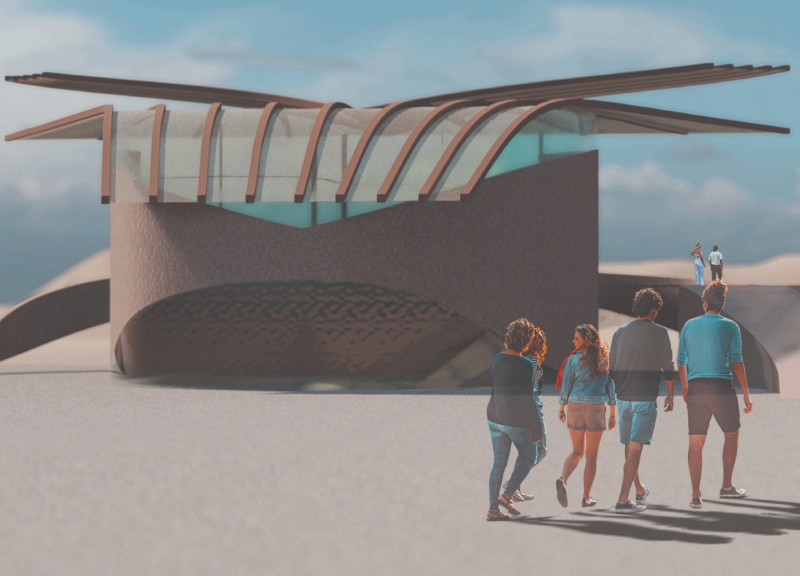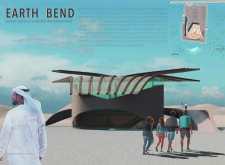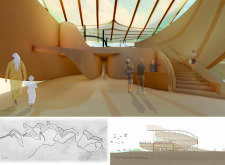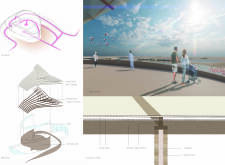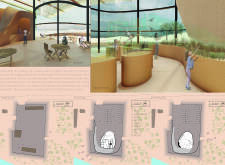5 key facts about this project
The Earth Bend Visitor Center is located within the Al Wathba Wetland Reserve, known for its rich ecology and unique landscape. It aims to create a strong connection between the building and the environment, focusing on sustainability and education. The design invites visitors to engage with the natural habitat around them while offering a space that highlights the importance of conservation.
Architectural Form and Materiality
The center features sweeping rammed earth walls that blend with the landscape. These walls are made from local sand, which helps reduce the environmental impact of transporting materials. The use of rammed earth adds a textured quality to the structure, enhancing its visual appeal while connecting it more closely to its surroundings.
Structural Design and Functionality
The visitor center has a two-story layout topped with a tensile fabric roof. This design choice supports spacious interior areas without needing many supporting structures. The roof allows natural light to fill the building, creating a bright environment for visitors. Each floor is organized to serve different functions, ensuring that the center meets a variety of visitor needs.
Spatial Organization and Visitor Experience
The lower level includes a lobby, gift shop, offices, and training facilities, while the upper level contains a café, display area, and terrace. This layout facilitates movement through the building, encouraging visitors to explore its different spaces. The terrace, which is raised above the ground, offers extensive views of the wetlands, enhancing the experience of being in nature.
Connection to Environment
A significant design element is the curtain window wall that links the café and terrace. This feature provides a visual and physical connection to the outside, allowing visitors to appreciate the landscape while relaxing indoors. The thoughtful combination of architecture and nature aims to foster a deeper understanding and appreciation for the environment, creating an enriching experience for all who visit.
The design highlights a harmonious relationship between built structures and their natural context, providing a meaningful space dedicated to exploration and education within the wetland reserve.


